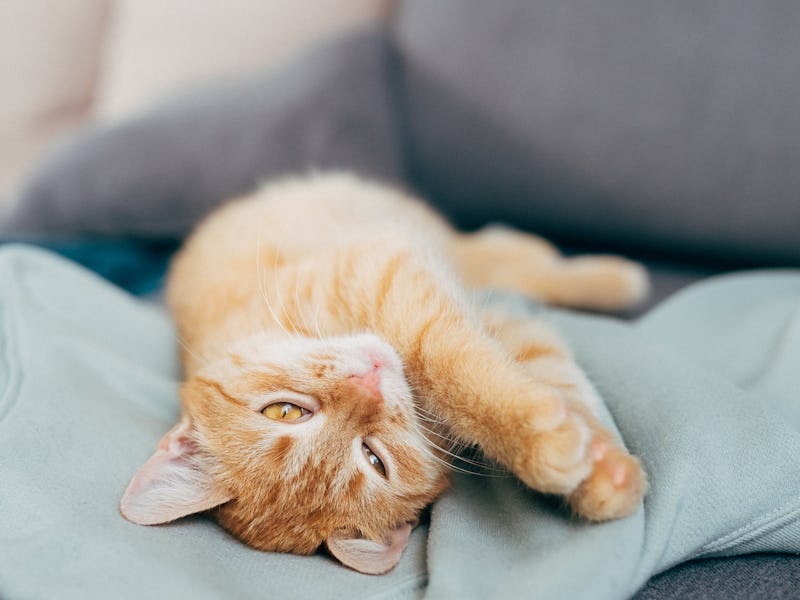Is My Cat Happy? Here's the Shocking Answer
Not to worry, your cat can be happy.

Every cat owner knows when their feline companions are hungry. But what about other emotions like sadness, anger, or happiness? Is there a way to tell if your cat is giddy with joy?
Cat experts have some good news for us on this front. “Yes, cats can be happy, definitely,” Mikel Delgado, a cat behavior consultant based in Sacramento with a doctoral degree in psychology with an emphasis on animal behavior and cognition, tells Inverse. This assertion goes beyond the mere approximation of happiness based on meeting basic needs. Even for animals like cats, there’s a difference between wellbeing and happiness.
A cat might be free of disease, well fed, warm, and safe, but still not necessarily happy, says Anna Mukhina, a veterinary resident at the University of Pennsylvania School of Veterinary Medicine. “Even if we have everything we need to survive doesn’t mean we’re having positive experiences in our lives,” she says.
While it’s impossible to know for sure how another species experiences the world, researchers often look to evolution to help them connect the pieces. Delgado points out that for mammals, which includes humans and cats, various brain functions have remained the same throughout evolution, including how they process emotions. That means “we would expect animals experience something like happiness,” she says. At the most basic level, this happiness could come from bodily functions, like eating and mating. But she also emphasizes that cats can form relationships with each other and with humans.
A 2004 paper published in the Journal of Feline Medicine and Surgery found that cats spend more time with certain cats than others. These chosen cats, the researchers concluded, suggest that cats might derive happiness from relationships with other cats.
Humans might think of cats as solitary creatures, says Mukhina, but their behavior demonstrates just how much they rely on connections. Their vocalizations and body language all signal to those around them how they’re feeling.
“Feline communication is very subtle,” Mukhina says. “It’s also very context specific.” You might think that purring, for example, is a surefire sign that a cat is happy. But she says that a cat might purr when it’s in distress as a way to cope. There are other physical signs that tell us whether a cat is purring happily or in distress. Mukhina says to look out for an arched back, a fluffed tail, and ears flattened against its head, which are all signs of a scared or unhappy kitty.
There are also clear signs of a happy cat, Delgado says. She says happy cats stretch out when they’re sleeping, and move comfortably through the home rather than furtively. Their ears are upright, their eyes are big, and their whiskers are relaxed rather than pulled back.
So if cats can be happy, what can we do to make them happier? “Probably the most important thing we can do is understand what cats’ natural behaviors are,” Delgado says. That includes letting them climb, scratch, and letting them hide when they feel like it. A happy cat can engage in all its favorite activities that activate innate senses and instincts.
Perhaps cat happiness doesn’t merit examination on an Aristotelian level, but it’s still worth exploring. After all, any cat owner can tell you the rewards of keeping your kitty happy.